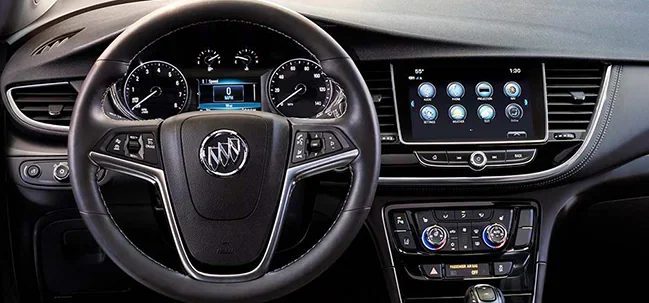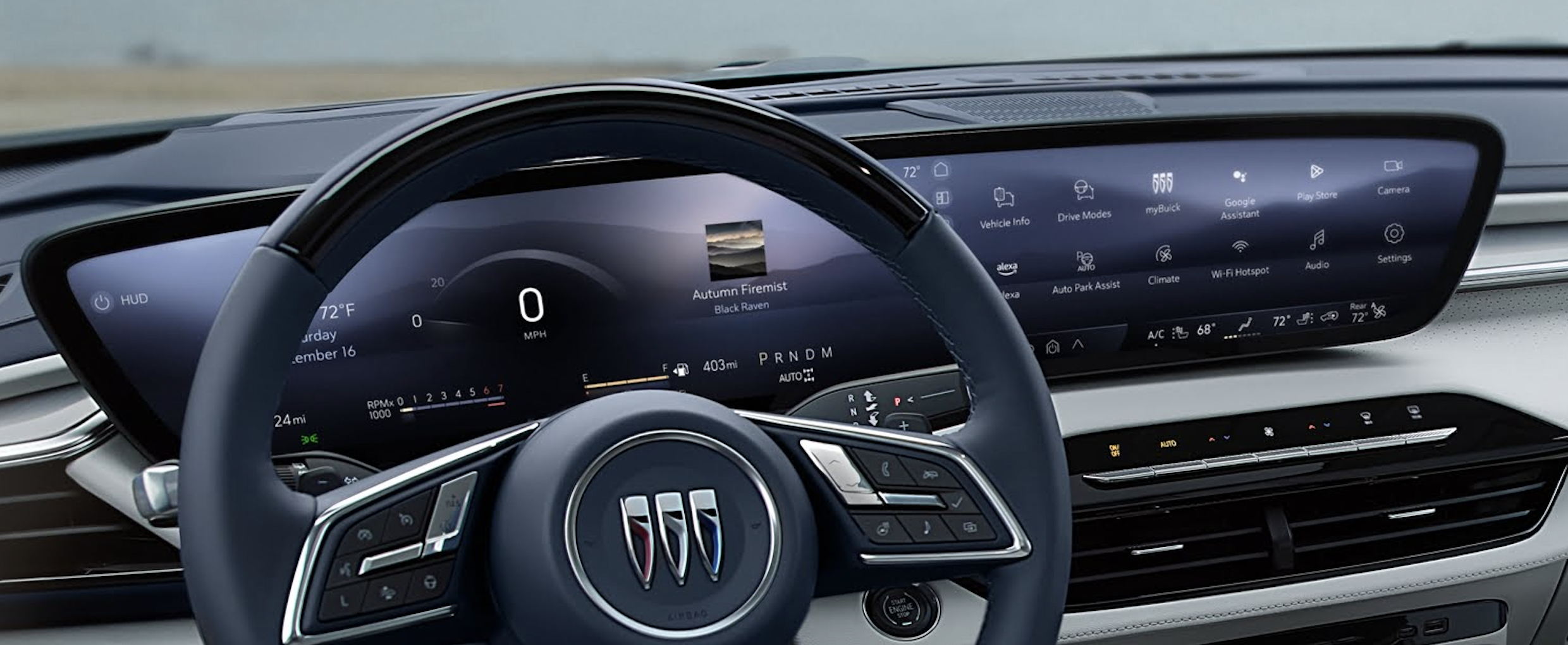Case Study: Buick’s Digital Transformation
MY23, MY24 Infotainment Framework
Story
From Hard Buttons to a Harmonized, Human-Centered Cockpit
When I joined General Motors in 2018 as a UX Design Lead for In-Vehicle Infotainment, Buick was at an inflection point. The brand stood for quiet sophistication and modern luxury, yet its in-vehicle experience still reflected an earlier era — a mix of digital screens surrounded by hard buttons and knobs for climate, navigation, and media.
The system worked, but it felt fragmented. Each control existed in isolation, requiring multiple inputs and distracting the driver from the road. The opportunity was clear: elevate Buick’s digital experience to match its design philosophy — serene, intuitive, and connected.
2018 Buick Encore
2024 Buick Encore
My Role
Lead Experience Designer - Buick Framework, Climate Controls & Home
What Is a Vehicle Infotainment Framework?
A vehicle infotainment framework is the underlying design and interaction architecture that governs how users experience — and how developers build — the digital cockpit.
It connects hardware, software, and UX design principles into a unified ecosystem so the experience feels coherent. All apps and functionalities follow the framework guidelines.
Understanding the Problem
We began with empathy. Through ride-alongs, dealership observations, and owner interviews, we watched how drivers actually interacted with their infotainment systems day to day.
The findings revealed clear patterns:
Inconsistent feedback between the physical and digital interfaces.
Long glance times to find simple functions like seat heating or map zoom.
Fragmented experiences — navigation, audio, and climate each had their own logic.
Limited personalization — the car didn’t remember or adapt to individual preferences.
It wasn’t about adding more technology — it was about making the experience disappear so the driver could stay focused, comfortable, and confident.
Navigating Hardware & Engineering Constraints
Transforming an infotainment system wasn’t just a design challenge — it was a technical balancing act.
We were designing for a platform shared across multiple vehicle lines, each with different screen resolutions, processing power, and legacy hardware dependencies.
Some of the challenges included:
Limited GPU and RAM capacity constrained motion fidelity and transition timing.
Varying aspect ratios required adaptive layouts that scaled from compact SUVs to premium sedans.
Backend limitations in legacy architecture made real-time personalization difficult.
To address these, I worked closely with HMI engineers, embedded software teams, and system architects to define what could be achieved within each hardware tier. We prioritized performance-critical interactions (navigation, voice, climate) for native execution, while secondary layers used lightweight frameworks.
This collaboration turned constraints into design principles — focusing on efficiency, clarity, and resilience, ensuring the experience remained smooth even under system load or hardware variance.
Building the Vision
I started working on low-fidelity prototypes with cross-functional teams in Detroit and Warren, I helped define a North Star vision…
“A seamless digital ecosystem that connects the driver to their vehicle and their everyday life — intelligent, effortless, and distinctly Buick.”
A major catalyst came when GM partnered with Google to embed Google Maps and Google Assistant directly into the infotainment system. This allowed us to bring contextual intelligence and natural voice interaction into Buick’s cockpit — enabling drivers to say, “Hey Google, navigate to work,” or “Set the temperature to 72,” without taking their eyes off the road.
But we didn’t just integrate Google — we harmonized it into Buick’s brand experience. The goal was to make the system feel personal, elegant, and cohesive, not like an external layer. We designed for connection beyond the car, syncing music, calendars, and routes from drivers’ digital lives so their Buick felt familiar the moment they stepped in.
Design principles guided every decision:
Clarity, Reachability, Responsiveness, and Serenity — all in service of a uniquely Buick kind of calm.
Prototyping & Validation
We translated this vision into high-fidelity prototypes, simulating real-time behaviors — touch response, haptic cues, animation timing, and adaptive layouts.
Testing spanned multiple contexts:
Driving simulators to measure driver distraction and glance time.
On-road prototypes to assess visibility, latency, and adaptive feedback.
Accessibility and comfort studies across demographics and driving conditions.
Our validation showed that a well-designed digital interface could replace physical redundancy while enhancing confidence and delight.
Home
Apps
Map
Music
Climate - Air
Cross-Functional Collaboration
Real transformation required tight collaboration:
Partnered with Industrial Design to align screen placement, curvature, and tactile flow.
Collaborated with HMI, Software Engineering and Google to fine-tune gesture response, voice integration, and haptic feedback.
Worked with Brand and Motion teams to ensure transitions felt refined and emotionally resonant, true to Buick’s design language.
Together, we established a unified design framework — the early foundation of the GM Global Design System for In-Vehicle Interfaces — ensuring consistency across Buick, Cadillac, Chevrolet, and GMC while preserving each brand’s identity.
Bringing Buick’s Brand to Life
Following prototyping and validation, we refined the visual design to align with Buick’s brand expression and premium aesthetic.
Delivering the Outcome
The result was a fully digital infotainment experience framework that felt sophisticated yet effortless — a reflection of Buick’s “QuietTuning” ethos.
The redesigned system unified:
Music & Media: Simplified browsing, personalized playlists, and one-touch favorites.
Navigation: Native Google Maps integration with real-time traffic and voice-first control.
Climate: Clean visual layouts and adaptive haptics replaced redundant hard controls.
Settings & Profiles: Driver personalization synced seamlessly with cloud-based accounts.
Google Integration: Just login and connect to your calendar, alerts nad emails.
Measured Impact:
40% reduction in visual clutter and menu layers
25% faster average task completion
Significant uplift in driver satisfaction and UX benchmark scores
Recognition: The project earned 3rd place in GM’s Global Culture Award, celebrating cross-functional collaboration, innovation, and impact on user experience across General Motors.
Reflection
This project was more than a redesign — it was a shift in mindset. Buick moved from a hardware-driven interface to a software-defined, human-centered experience, one that connects the driver not just to their vehicle, but to their everyday rhythm.
By grounding design in empathy, clarity, and collaboration — while balancing real-world constraints — we transformed a semi-digital cockpit into a calm, intelligent, and connected experience that embodied Buick’s vision of modern luxury through simplicity and grace.









